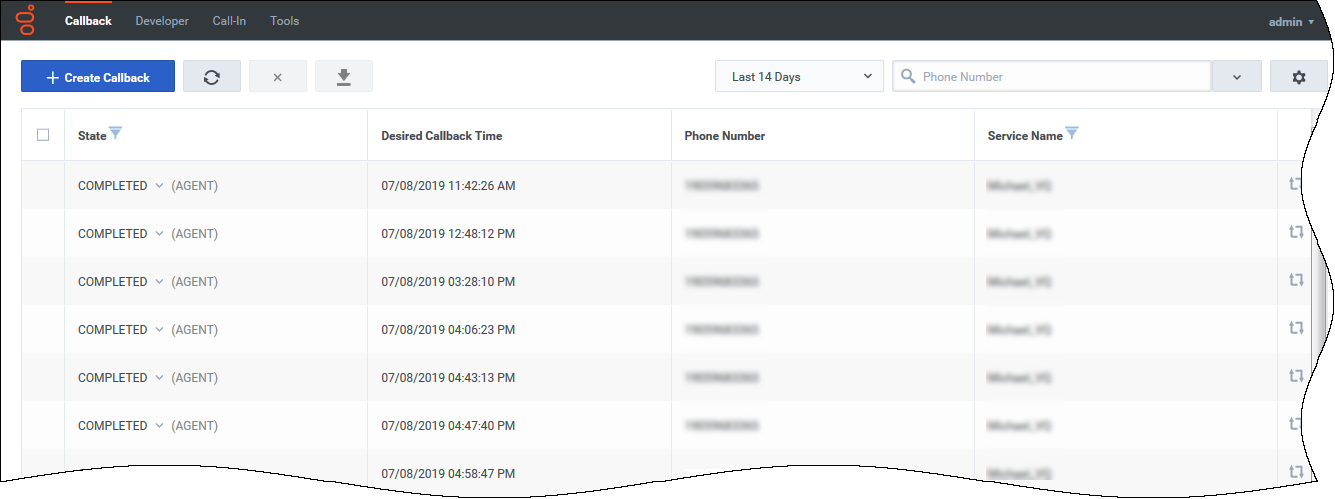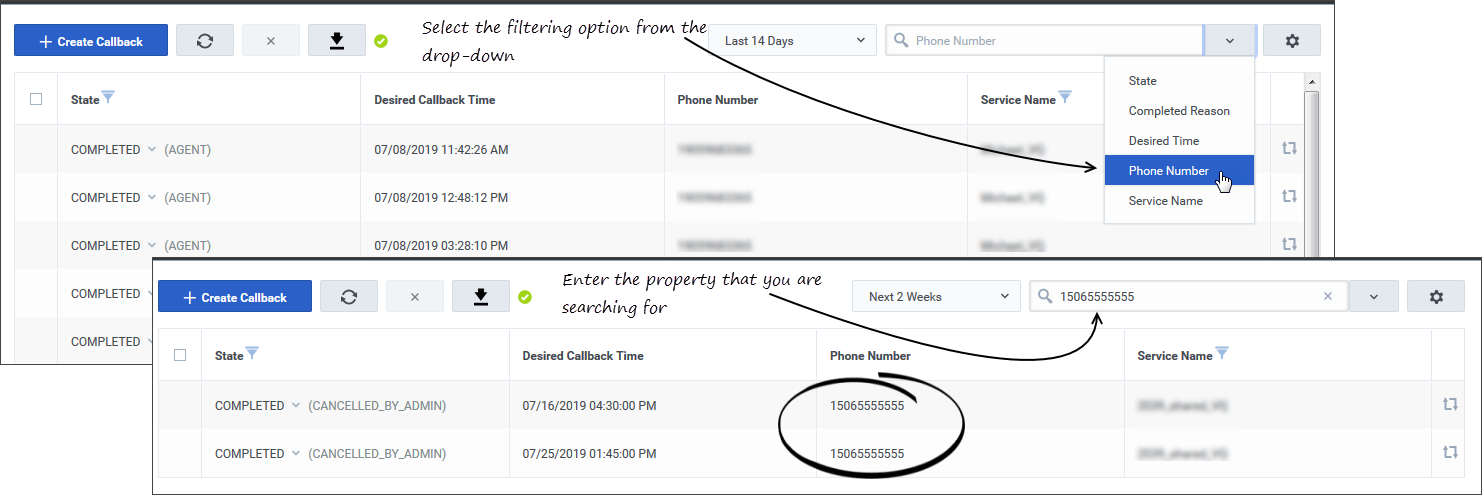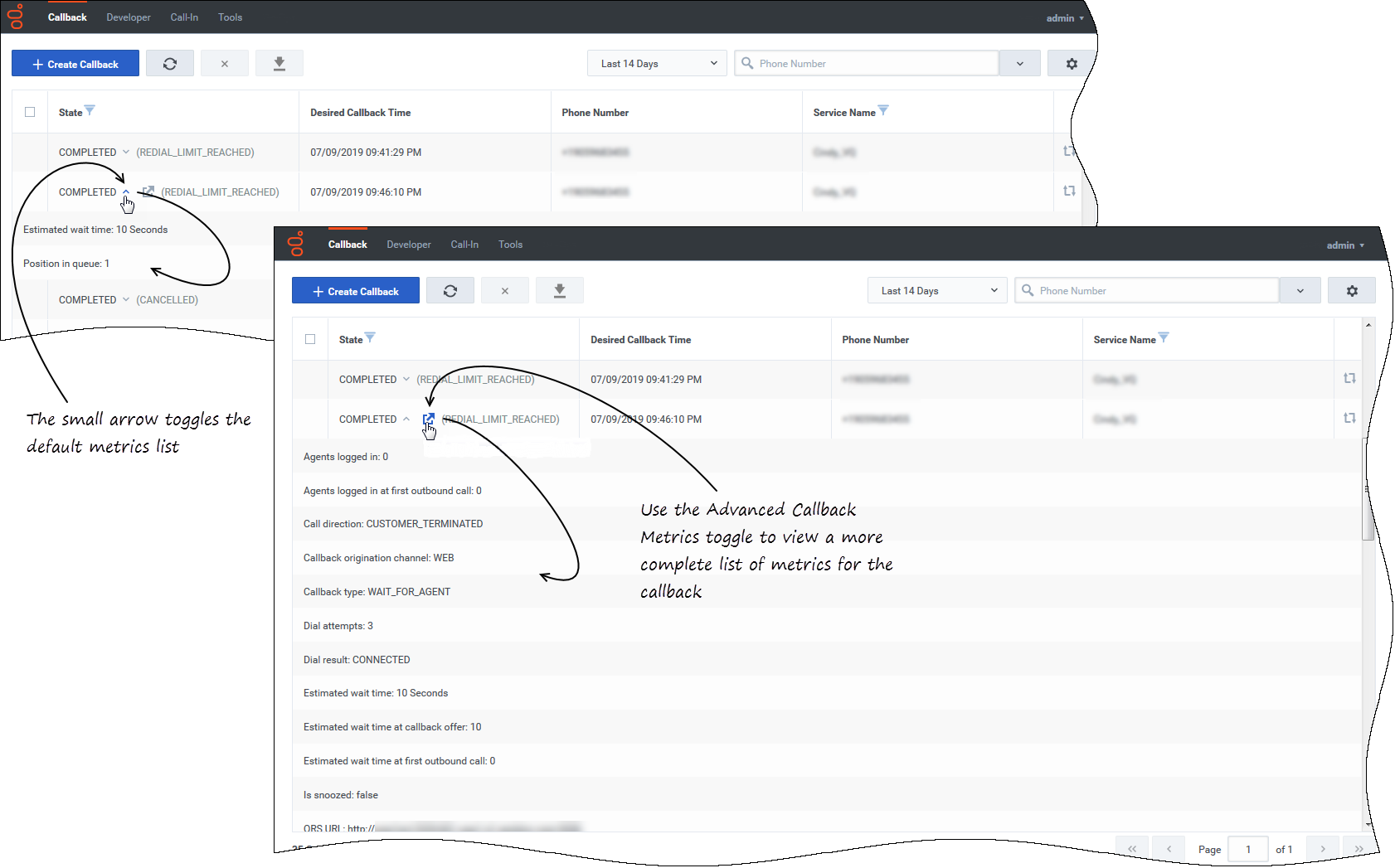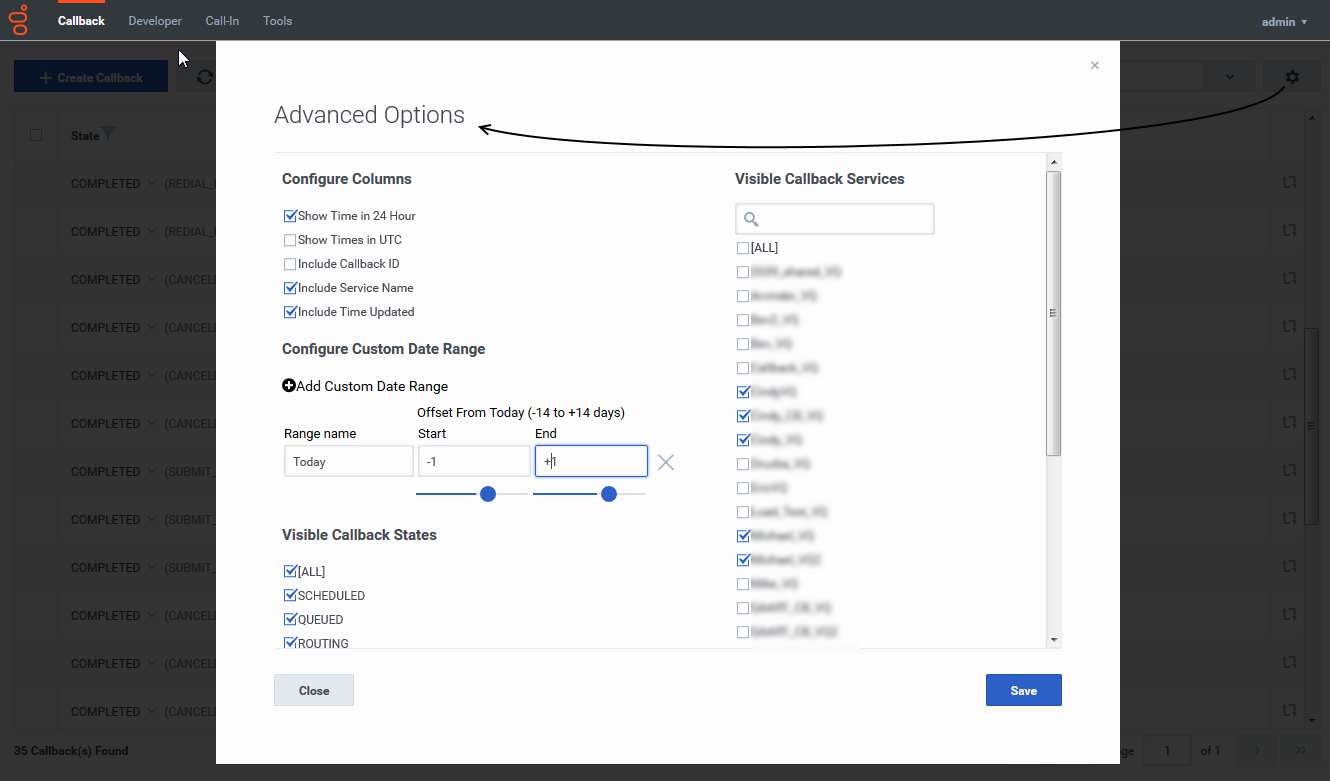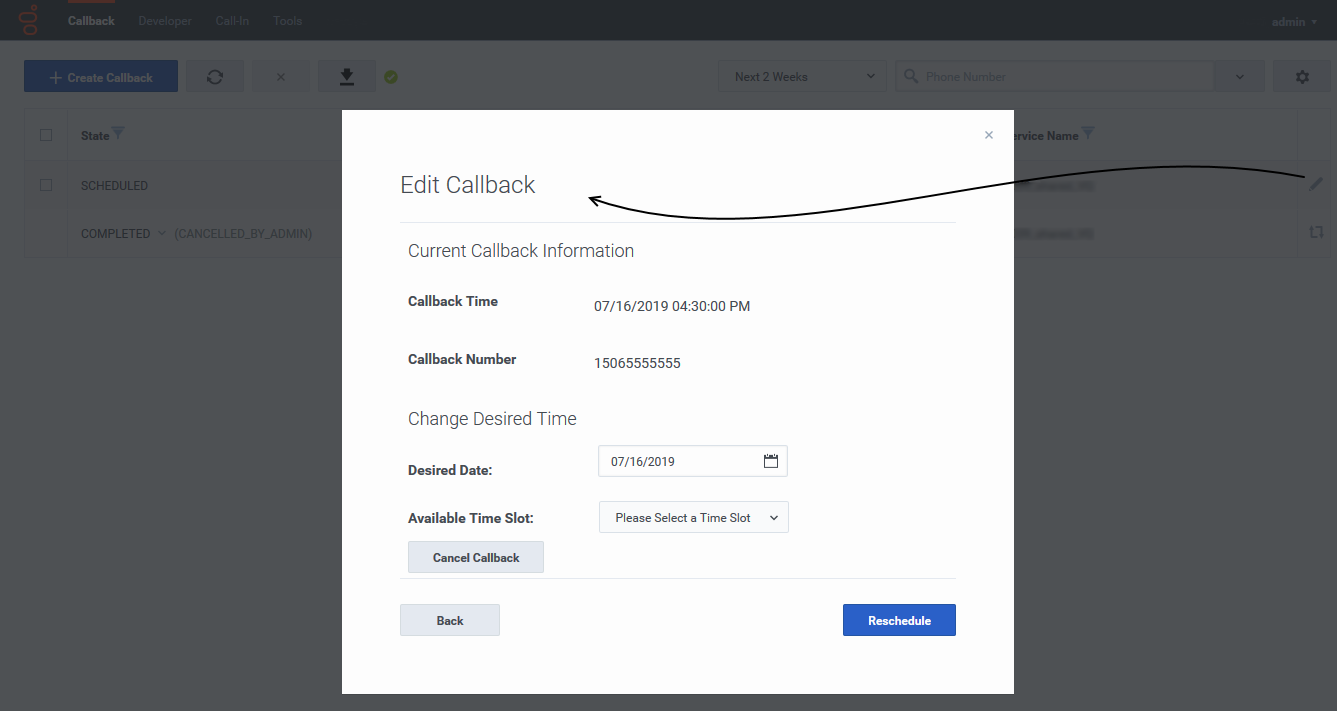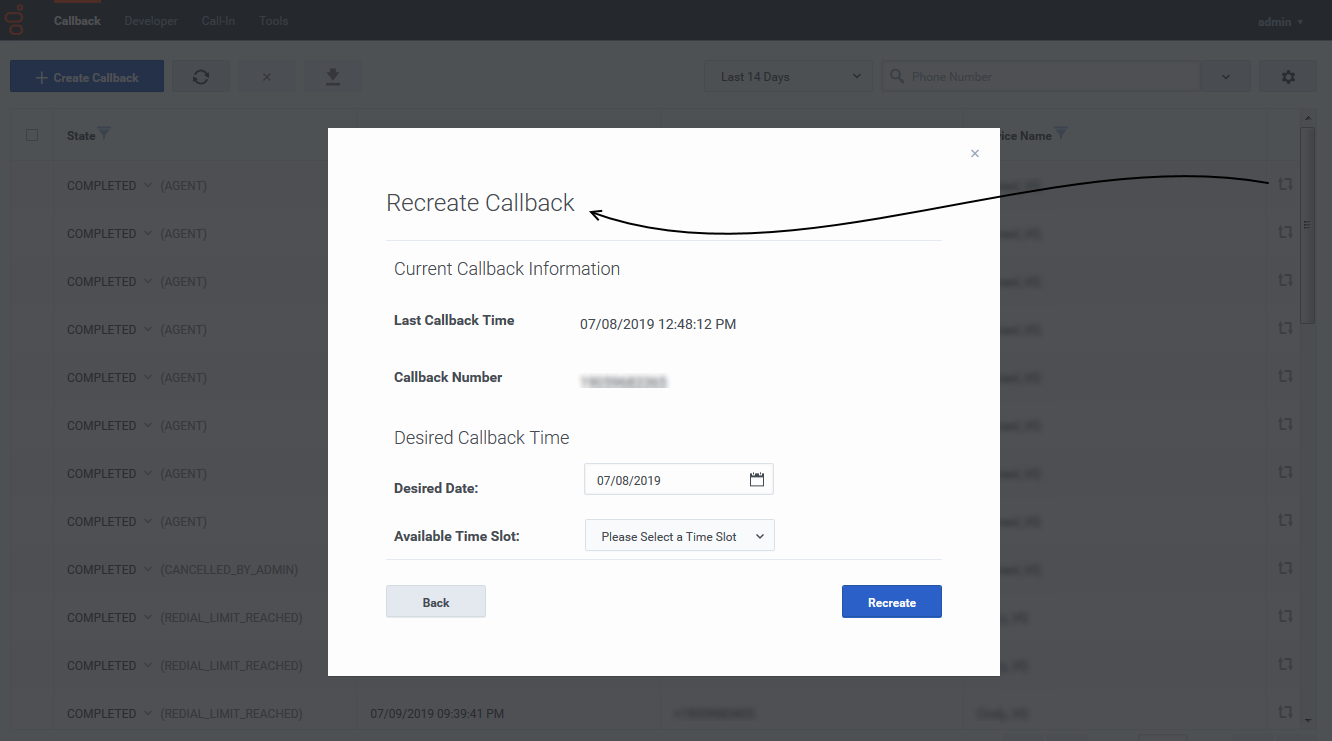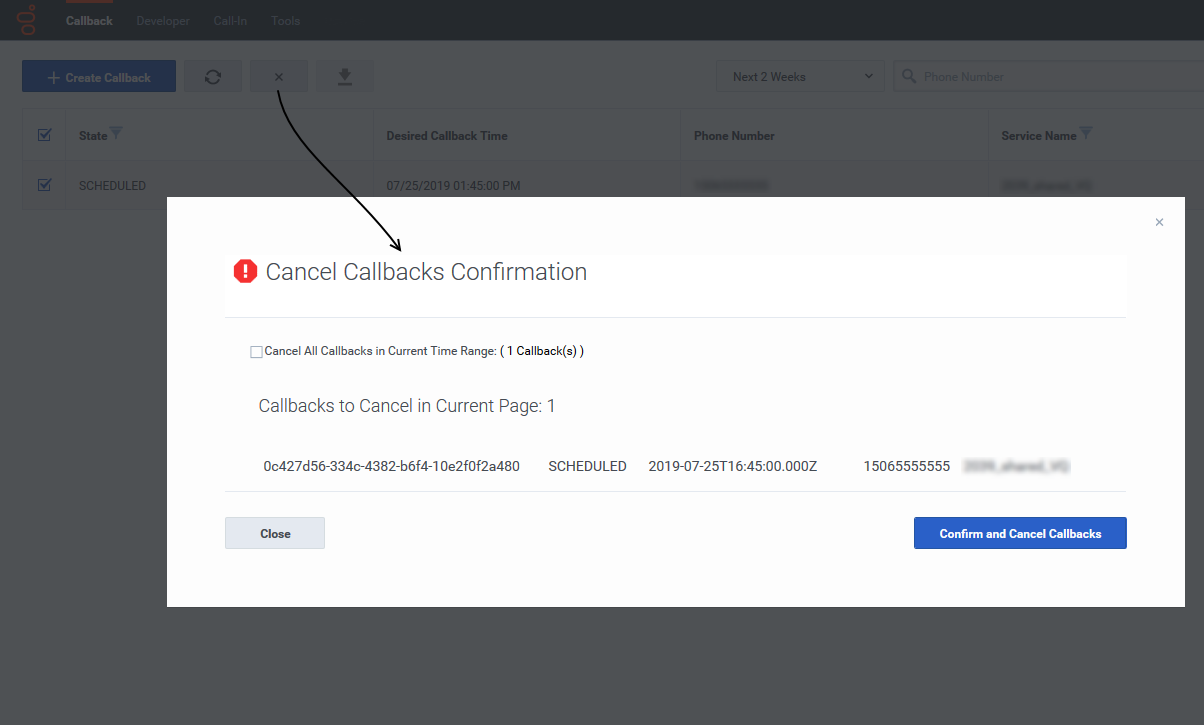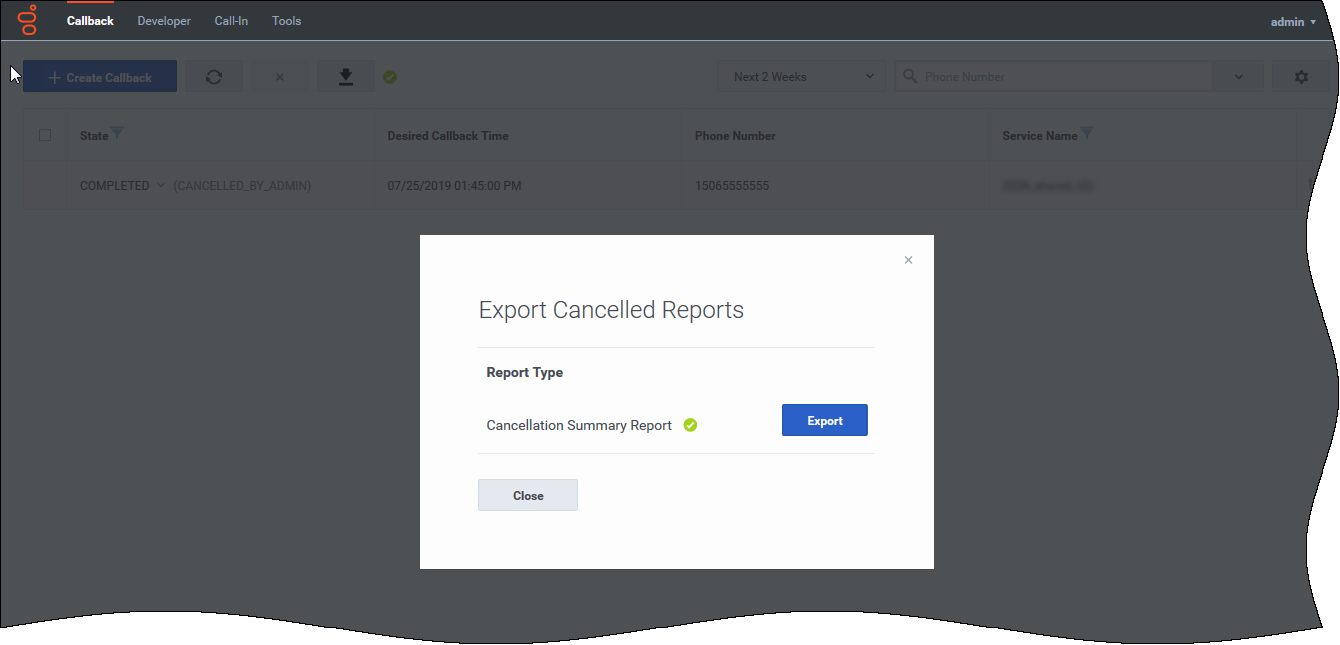Contents
Managing Callbacks
You might see Service or Service Name mentioned in the Callback UI. A service, in this context, is a virtual queue. The service name, therefore, refers to the name of the virtual queue. On the Callback page in the UI, the Service Name column identifies, by name, the virtual queue associated with each callback.
Callback Monitor is the minimum role required to access the Callback tab.
The Callback page in the Callback application displays the list of callback records. Callbacks are displayed in pages of 250 items. On this tab, you can create, edit, or cancel callbacks if you have sufficient user privileges. Your ability to access tabs and dialogs on the Callback page is based on your Role permissions.
A callback record will continue to display on the Callback page for a fixed number of days after the Desired Callback Time has passed; you might need to select a different time filter in order to see it.
Callback states
Callback records can have the following states:
- SCHEDULED—Callback Management is handling the request (there are no sessions started in the system). While in this state, the request is available in the Callback tab when the specified Desired Callback Time is upcoming.
- QUEUED—Callbacks actively waiting for an agent in ORS/URS; the agent is not assigned yet.
- ROUTING—Agent is reserved but the call is not yet routed to the agent.
- PROCESSING—Callback being handled by assigned agents. You cannot cancel a callback when it is in the PROCESSING state.
- COMPLETED—Callback was completed with a result; for example, timed-out, cancelled, and so on. See the Result tab of your Callback block in Designer. The completed reason appears beside COMPLETED in the state column of the table.
When a callback in the SCHEDULED state remains in that state past the Desired Callback Time, a warning icon displays to alert you. Hovering your cursor over the icon displays the warning message.
A calendar icon displays beside callbacks that originated as scheduled callbacks. If there is no icon associated with a callback's state, then the callback was initiated as an immediate callback.
Callback Administration Overview
The Callback tab includes the following features:
- Refresh—You can force the interface to refresh the list of callbacks.
- Date range selector—The date range drop-down menu lets you filter the list of callback records based on a specific (pre-defined) period of time. In the Advanced Options window, you can add your own custom date range to the drop-down menu.
- Search box—You can select a column field in the drop-down at the right of the Search box. The interface then filters the results dynamically as you type.
If you do not see your callback after you successfully create it, make sure that your time filters are correct. For example, if you scheduled a callback to occur in two days, it does not show up if the Last 30 Days label is selected; switch to Next 7 Days for example.
Metrics
On the Callback tab, you have access to diagnostic data or metrics for each callback record. The metrics that are available for a callback depend on the callback's state. As the state of the callback progresses, more data becomes available, which means that additional metrics become available as well.
To view the metrics for a callback, click the arrow beside the record. Callback provides some basic information below the callback record (Position in Queue and Estimated Wait Time).
To view all metrics for the callback, click the Advanced Callback Metrics toggle. For example, you might want to know who cancelled a particular callback. That information is available in the list of advanced metrics.
Advanced options
Advanced Options—Opens a new window where you can customize how the Callback tab displays data:
- Configure Columns—Select display properties for columns.
- Show Time in 24 Hour—Show all times in 24-hour time rather than AM/PM format.
- Show Times in UTC—Show all times in the table in UTC time rather than local time.
- Configure Custom Date Range—Add a time range filter.
- Filter the display of callbacks by States and Services—To filter the list of callbacks that display on the Callback tab, you can select specific callback states and virtual queues (services). To view callbacks in any state, select ALL in the Visible Callback States list. Similarly, to view callbacks from every virtual queue, select ALL in the Visible Callback Services list.
Create or Schedule a Callback
You can submit or schedule a callback request by clicking Create Callback. A new dialog opens. Select the Callback Type (Immediate or Scheduled), then a Service Type (the name of the virtual queue provided in Designer), and enter the number to call in the Customer Number field. For scheduled callbacks, select a date and time for the call.
Edit a Callback
If a callback can be edited, a blue pencil displays in the last column of the table. Click the pencil icon to display the edit options for that callback:
- You can choose to reschedule the callback (only for SCHEDULED callbacks).
- You can choose to cancel the callback.
Recreate a Callback
For completed callbacks that can be recreated, the ![]() icon displays in the last column of the table. Click the icon to open the Recreate Callback dialog for that callback.
icon displays in the last column of the table. Click the icon to open the Recreate Callback dialog for that callback.
Name recordings will be preserved if a callback is rescheduled within four days of the completion of the original callback.
Bulk Cancel and Export of Callback Records
Make sure to select an appropriate time range to filter callbacks, then make a callback selection to activate the Cancel Callbacks button. When you click this button, the Cancel Callbacks Confirmation dialog opens, displaying the selected callback cancellations.
You can either:
- Continue with the selections you have made and click Confirm to cancel them.
- Check Cancel All Callbacks In Current Time Range to override your previous callback selections and delete all callbacks in the current time range. In that case, the list of displayed callbacks disappears from the dialog. Callbacks that are in the PROCESSING state cannot be cancelled. If there are any callbacks in this state within the selected time range, they are excluded in the Cancel Callbacks Confirmation dialog box and are not cancelled.
Click Confirm to cancel the records.
The resulting display shows all the callbacks that you have cancelled and that are now in the COMPLETED (CANCELLED_BY_ADMIN) state.

